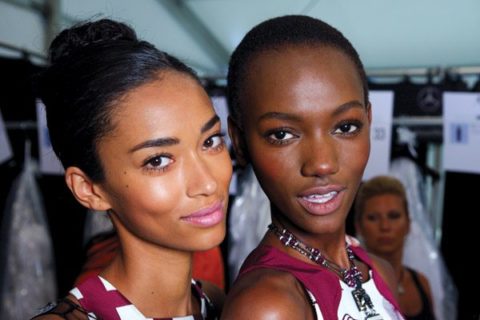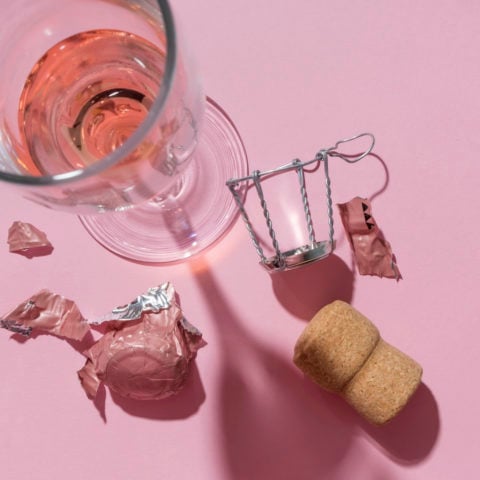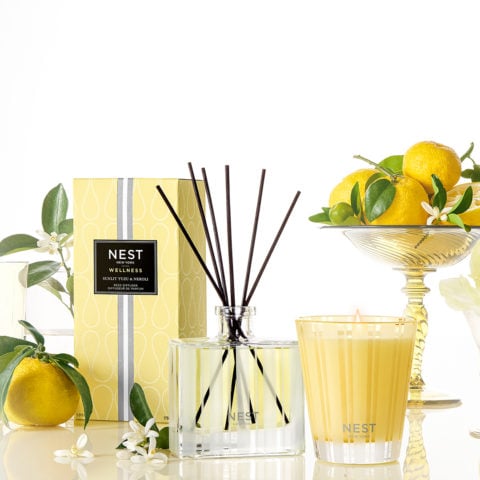The battle against colourism: How beauty brands are addressing darker skin tones

In the days before the Academy Awards, actress Lupita Nyong’o could have stuck to primping for her big night, but instead she chose to speak about “dark beauty” at the annual Essence Black Women in Hollywood luncheon. She read aloud a letter from a fan who, after seeing her success, had decided not to buy a skin-lightening cream. Nyong’o explained that she too once hated her skin tone, that she was teased and taunted, and that her “one prayer to God was that I would wake up lighter-skinned.” That fan wasn’t the only one paying attention: When Vanity Fair was accused of lightening the 12 Years a Slave star’s deep brown skin for her portrait in its February 2014 Oscar issue, armchair comments ranged from “Black people like to be adequately lit too” to “It’s so nice to finally see a black celebrity with really dark skin.”
It’s easy to think of Beyoncé, Rihanna and Freida Pinto as symbols of inclusivity; they are, but with their light skin and/or light eyes, they represent a beauty ideal that many women of colour can never hope to achieve. Colourism (or shadeism) is a type of discrimination that occurs within ethnic groups, creating a quiet divide between light- and dark-skinned people of colour. It drives women to choose too light a foundation; use lightening creams with dubious ingredients and results; or opt for surgical treatments. If you’re any type of brown, hearing an auntie say, “Stay out of the sun or you’ll get too dark!” is about as common as being told to eat your vegetables.
The crowning of Miss America last fall sparked a discussion around skin tone, giving an antiquated pageant system the most attention it’s seen in years. As many observed, the Indo-American winner, Nina Davuluri, looked Indian, and would probably be too dark to compete for the Miss India title.
In India, the desire for light skin is a national obsession: The country’s whitening-cream market was worth $432 million as of 2010, and it’s growing at 18 per cent a year. (Actress and L’Oréal Paris face Pinto has said that she cringes at a modelling job for lightening cream she did early in her career, adding: “It’s completely wrong, medically and culturally.”) In response to that trend, the Dark Is Beautiful public education campaign began in 2009—and the recent addition of actress Nandita Das gave the cause some Bollywood sparkle.
“Every year there is a trend piece about models of colour on the runway,” says Toronto student Corrine Aberdeen. “They’ve gotten more diversified but not that much darker.” Like Nyong’o, she prayed for lighter skin as a little girl, but time and a loving mother instilled confidence in her deep Grenadian complexion. There were missteps at the makeup counter along the way, though: Aberdeen recalls a 16th-birthday photo of herself wearing a film of ill-matched foundation resembling a clay mask. “I wish someone could have helped me,” she says.
The launch of Iman Cosmetics in 1994 marked one of the first high-profile makeup collections for women of colour. Today, no major cosmetics company would be without a wide range of shades, and the beauty industry is emerging as a surprise instrument for discussion by messing with its own concept of what a “nude” colour is. This past winter, Clinique released 16 Shades of Beige (from $14, clinique.com), a collection of eyeshadows and nail enamels. “Neutrals and nudes have always been portrayed as a beige tone,” says Scott Miselnicky, Clinique’s vice-president of global product development. “By expanding on the concept of what beige means to all skin tones, we made a play on what this would mean for women of all skin tones.” Meanwhile, Maybelline released its lipstick collection The Buffs by Color Sensational ($10 each, at drugstores), eight nudes ranging from “Blushing Beige” to “Espresso Exposed.” And at Stella McCartney’s Fall 2014 show, manicurist Madeline Poole mixed a wide range of customized neutrals from Sally Hansen’s Complete Salon Manicure line ($9 each, at drugstores). On the fashion side of the spectrum, Christian Louboutin launched a collection of nude pumps to match various skin tones.
This is not to say makeup is a cure-all. “Women who are not happy with their natural skin colour are the ones going wrong, as they demand a lighter colour of foundation,” says Mickey Contractor, M.A.C’s cosmetics director of makeup artistry for India and makeup man to Aishwarya Rai and Guess girl Priyanka Chopra. That impulse is part of a bigger problem, says Elizabeth Arden’s global makeup artist Rebecca Restrepo, who has worked with Mindy Kaling, Michelle Obama and Alicia Keys. “It’s a cultural thing, so it’s hard. In the West, where you’re surrounded by so many different types of global beauty, you’re a little more accepting of yourself,” says Restrepo, inadvertently explaining why Davuluri could win Miss America but not Miss India. “The only way is to speak to a woman and tell her she’s beautiful. It’s more psychological to get someone to accept themselves.”
Like most girlfriends, Pinki Gosal was nervous about meeting her boyfriend’s family. Gosal’s Indian roots are Gujarati, while her partner’s are Punjabi. “My husband is very good-looking, and his family is tall and light-skinned. When meeting his mother, I was intimidated,” she says. “I had an idea of what she felt was beautiful. I asked my husband if she would be disappointed if he brought home a non-Punjabi girl, not tall and fair-skinned.” That might seem typical of new romance jitters, if not for the fact that Gosal is a founder of Vasanti Cosmetics, a Canadian beauty line for women of colour. Launched in 1999, the line has grown to over 140 offerings for all skin tones. Gosal travels frequently to Asia for work and sees the pressure there to be light, but feels North America is progressing. “It’s more about a glow than being five shades lighter,” she says.
Dismantling any beauty myth requires advocates, and those are rising to the surface. Last summer, Oprah Winfrey’s OWN network gave the 2011 documentary Dark Girls its worldwide television debut. The mesmerizing but painful doc shows black women telling stories of ridicule or rejection, which prompted a lively online discussion and led Winfrey to revisit colourism for her series Life Class, calling it “the most unacknowledged and unaddressed mental health crisis.”
“The way we perceive and indoctrinate our beliefs about beauty is a legacy that gets passed down from family to family,” says Canadian actress/writer Anita Majumdar, whose play, Same Same But Different, looks at two Bollywood actors’ relationship to the shade of their skin. Meanwhile, Toronto filmmaker Nayani Thiyagarajah travelled to East Africa and the Caribbean to film her upcoming documentary, Shadeism: Digging Deeper. “‘Your features are so nice, it would be even better if you were lighter,’” says Thiyagarajah, repeating what many of her interview subjects said of their upbringings. “I laugh because it’s so ridiculous, but it deeply hurts people, and they carry that with them and believe it.”
Days after her moving speech, Nyong’o climbed the steps of the Dolby Theatre to collect her Oscar for best actress in a supporting role. She wore a pale-blue custom Prada gown that called to mind the one worn by the iconic, lily-white Cinderella in the 1950 Disney classic. Here’s a new beauty ideal we’d like to see outlast the stroke of midnight.







